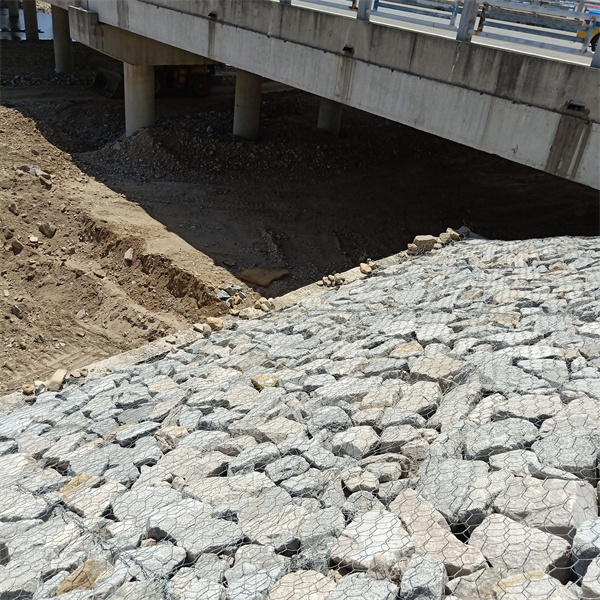Nov . 14, 2024 04:26 Back to list
gabion basket filling
Understanding Gabion Basket Filling A Sustainable Solution for Erosion Control and Landscaping
Gabion baskets have gained popularity in civil engineering, landscaping, and environmental protection due to their versatility and effectiveness in various applications. These wire mesh containers, typically filled with rocks or other materials, offer a sustainable and aesthetically pleasing solution for erosion control, riverbank stabilization, and even as decorative landscaping elements. This article explores the concept of gabion basket filling, the materials commonly used, and the benefits they provide.
What is a Gabion Basket?
A gabion basket is a rectangular or cubic structure made from welded or woven wire mesh. It is designed to enclose various types of fill materials, creating a sturdy and flexible mass that can withstand natural forces. The baskets are often used in construction and landscaping projects, providing support for slopes, controlling erosion, and enhancing the visual appeal of outdoor spaces.
Choosing the Right Filling Material
The filling materials used in gabion baskets can vary widely, depending on the intended use and specific project requirements. Common filling materials include
1. Rock Natural stone is the most popular choice for filling gabion baskets. Various sizes and types of rock can be used, including granite, limestone, and river rock. The weight and interlocking nature of rocks provide stability, making them ideal for erosion control and landscaping.
2. Recycled Materials Sustainable practices are increasingly vital in construction and landscaping. Many projects utilize recycled materials for gabion fillings, such as crushed concrete, bricks, or broken tiles. These materials not only reduce waste but can also provide unique textures and colors to the finished structure.
gabion basket filling

3. Soil and Vegetation In some cases, gabion baskets can be filled with soil and planted with vegetation. This approach promotes green infrastructure, allowing plants to grow through the wire mesh, establishing root systems that further enhance the basket's stability while providing habitat for local wildlife.
Benefits of Gabion Basket Filling
1. Erosion Control Gabion baskets are particularly effective in preventing soil erosion along riverbanks, slopes, and roadways. The weight of the filled baskets resists the forces of water and wind, stabilizing the surrounding soil and preventing landslides.
2. Natural Drainage The open structure of gabion baskets allows water to flow freely through the materials inside. This natural drainage reduces the risk of water pooling and helps maintain a healthy ecosystem by preventing waterlogging in surrounding areas.
3. Aesthetic Appeal Gabion baskets can be designed and colored to enhance the beauty of landscapes. Creative designs, such as curved walls or terraced structures, can integrate seamlessly with natural surroundings, providing both functional and visual benefits.
4. Cost-Effectiveness Compared to traditional retaining walls and erosion control methods, gabion baskets can be a more economical option. The materials used in filling can often be sourced locally, reducing transportation costs and promoting sustainability.
5. Durability and Low Maintenance Gabion structures are designed to withstand harsh weather conditions and natural forces without significant deterioration. They require minimal maintenance over time, making them a long-term solution for erosion control and landscaping needs.
In conclusion, gabion basket filling represents an innovative and sustainable approach to addressing erosion control and enhancing landscapes. With a variety of filling options available, including natural rocks and recycled materials, gabion baskets not only provide structural stability but also contribute to the aesthetic and ecological value of outdoor spaces. As communities increasingly prioritize sustainable development practices, the use of gabion baskets will likely continue to grow in popularity, offering a practical and attractive solution to modern environmental challenges.
-
The Role of Galvanized Gabion Mesh in Riverbank Protection
NewsJun.26,2025
-
The Role of Gabion Basket Raised Bed in Sustainable Gardening
NewsJun.26,2025
-
Quality Assurance of Wire Mesh Gabion Baskets
NewsJun.26,2025
-
Installation Guide for Welded Gabion Box
NewsJun.26,2025
-
How to Choose the Right Gabion Box
NewsJun.26,2025
-
Different Types of Gabion Wire Mesh
NewsJun.26,2025
-
Why PVC Coated Gabion Mattress Is the Best Solution for Long-Term Erosion Control
NewsMay.23,2025






